“I just don’t want to be alive”, was the most succinct way I could put it, when a friend asked me to describe how I was feeling. I continued, trying to convey the despair that sometimes takes hold of me. “It’s too much, the anxiety, my thoughts are so overwhelming I’d do anything to stop them, but they’ll do anything to stay. I’m constantly battling myself and I’m so sick of it. There’s moments that I’ve thought, ‘If only there was a button I could press, that would make me disappear and replace me with a clone, I’d press it, to end dealing with my inner world, but also to not feel guilty about leaving everyone behind’”. Luckily, such a convenience doesn’t exist.
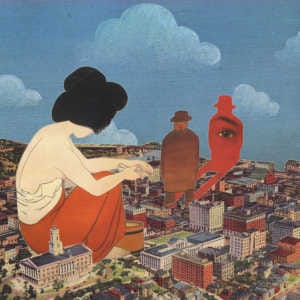
I suffer from anxiety-induced depression. I’m fully aware that there is a spectrum of mental health difficulties. I’m also aware that everyone’s struggles are personally relevant, unique, and yet relatable on some level when we try to share our lowest moments. I’ve been prescribed anti-depressants (for me it made it worse), tried running (helped relieve anxiety), practiced meditation (helped me identify and prevent circular thinking) along with all the other things you’re supposed to do. Result: I still, from time to time, suffer from debilitating depression that affects my life on too many levels. It is here to stay.
Once you realise you have to live with something, if you can accept it as part of yourself instead of fighting it, it becomes a little bit easier to deal with. It took me a long time to accept that, I’m still learning to accept it. I constantly have to re-learn to accept it. It’s better than fighting it.
In addition to accepting it, we can learn to express it. This can be in words but this can also be in art. At some point I decided to be an artist, I guess because I knew I’d never have the words.
I’ve travelled an unusual journey to reach this point. I was never a “visual person” until ten years ago, aged 28, when my parents got me a camera as a gift. It didn’t take long before I realised I had a certain knack for composing images and two years later, with no training, I got a portfolio together and applied to DIT to study BA Photography. I did this mid-recession, with no confidence or self-esteem, whilst being long term-unemployed, on the dole, at the age of 30 after eight years of working as a carpenter on building sites. I graduated with a 1:1. It’s never too late for change.
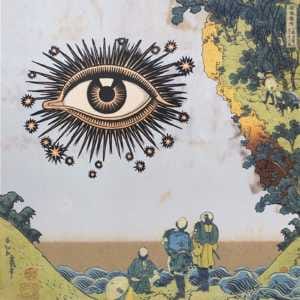
Although I loved the course, I found photography limiting in its means of expression. So, five years after I first started taking photographs, mid-degree, I found myself experimenting with collage in the evenings as an antidote to my prohibitive coursework. Its mysterious symbolic use of juxtaposition and multiple possibilities of meaning from imagery sourced throughout the ages of visual art resonated a deep, strange, loud chord within me. I didn’t know it at the time but five years ago, when making these collages, I was using art therapeutically.
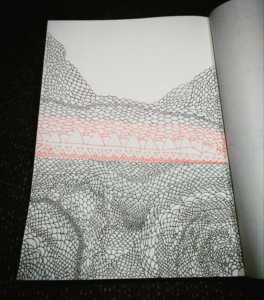
Kept tediously drawing until my mood changed.
This works on several levels. Closest to the surface, you are being productive, your mind is occupied, like any craft, you are feeling “useful” to some degree. Next, you have the surface expressive level where you make something, someone views it and a level of communication exists. Even if no-one sees it, the communication still exists, because you communicate with every piece you make it, even if 50% of the time that sounds like “can’t believe I made you, you’re an awful pile of shite altogether”. Then, deeper down, exists a murky, indescribable and psychologically therapeutic level. Here is where you can externalise emotions both present and buried without even knowing it. That’s what I attribute to the unusual lift I felt whilst studying Art Therapy last year. I chose to not talk directly in group therapy, I spoke through the art. I got such relief from this, the kind of feeling you get when you’ve shared something that’s really been bothering you to a close friend. I was making disturbing, embodied and powerful art, some of it I couldn’t even look at once it was made, yet I felt a release that I otherwise would of kept pent up, doing unknown internal damage.
It wasn’t until I studied Art Therapy that I really understood the power of art as a way to communicate what we cannot put in words. There are 171,000 words in English language yet we still cannot describe what’s going on in our heads. There could be several million words and it still wouldn’t help. Some things just need a visual language. Some emotions need to be expressed in an open-ended manner. And some art can be used as a vehicle for such fluctuating expressions.
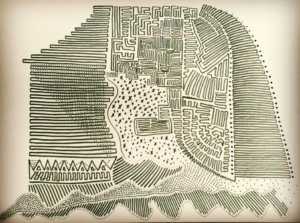
Sat down to make this doodle with the specific purpose to distract myself from my thoughts, adjust my perception of my anxious state at the time. It worked.
A common misconception surrounding art is that you need skill or talent. It’s always something someone else possesses. This might be true if you just want to impress people. But making art, on a therapeutic level, is not about impressing anybody. It does not have to possess aesthetic qualities. Every time I share art, I do it with a sense of unease. Of course I care about what people think. But I have observed that the pieces that I deem to be the least aesthetically pleasing, the ones make me feel most vulnerable, the ones that I have created from pain, that ones that I share with the uncomfortable trepidation, have been the ones that have benefitted me most on a therapeutic level. This style of art is more commonly known as mark making. This is art at a more embodied, primitive raw level. Mark making is available to anyone with no formal art training whatsoever. Anyone skeptical of this statement should watch Brent Pope: Inside Out, to witness untrained artists make some of the most inspiring and amazing art I have ever seen.
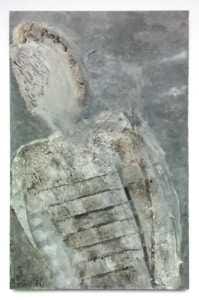
Started in landscape format with swirling shapes until I saw the faint shape of a body when rotated to portrait format, so followed that to the end
When mark making, the piece is non-goal orientated. You are creating in a responsive manner. I have absolutely no plan for what the outcome will be, it is 100% process driven. It is meditative and all about what’s happening in each moment. It is very emotive, experiential, wholly spontaneous and as non-judgmental as possible. You are in constant dialogue with the piece. The piece takes you on a walk; you’ve no idea where you both are going. If you don’t know where you are going then mistakes don’t exist. No wrong turns when the aim to get lost. The sense of calmness this provides reminds of me of playing with art materials as a child. I’m aware it takes a certain looseness to be able to create art in this frame of mind, that’s why it feels child-like. As people grow into adults they un-learn that skill. But it doesn’t take that long to learn to be comfortable with making a mess again.
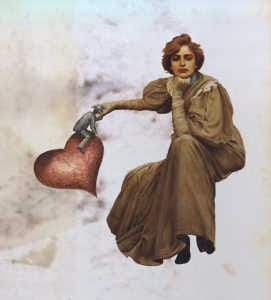
A girl who bought this print told me years later that the woman’s defiance helped her deal with her own mothers death following cancer.
I am someone that has had such a struggle with overbearing constant anxiety for the last 17 years. It has taken a serious toll. It has held me back. It stopped me being who I wanted to be, for much longer than I’d like to admit. It still does to a degree. But I am without a doubt getting better at managing it, accepting it and relieving it. There are many ways you can get help both from mental health professionals and through your own personal efforts. I truly believe that certain forms of art making can be part of a healing process, at the very least mark making gives temporary respite from your own head. As the old saying goes, “impression without expression equals depression”.
Help information
If you need help please talk to friends, family, a GP, therapist or one of the free confidential helpline services. For a full list of national mental health services see yourmentalhealth.ie.
- Samaritans on their free confidential 24/7 helpline on 116-123, by emailing jo@samaritans.ie
- Pieta House National Suicide Helpline 1800 247 247 or email mary@pieta.ie – (suicide prevention, self-harm, bereavement) or text HELP to 51444 (standard message rates apply)
- Aware 1800 80 48 48 (depression, anxiety)
If living in Ireland you can find accredited therapists in your area here:
Support Our Campaign
We rely on the generosity of the public to fund our work and so far together we have achieved great things! Please do continue to support us so we can provide future generations in Ireland with the resources to recognise and talk about their emotions, and equip them to navigate the ever-changing world around them as they grow

























